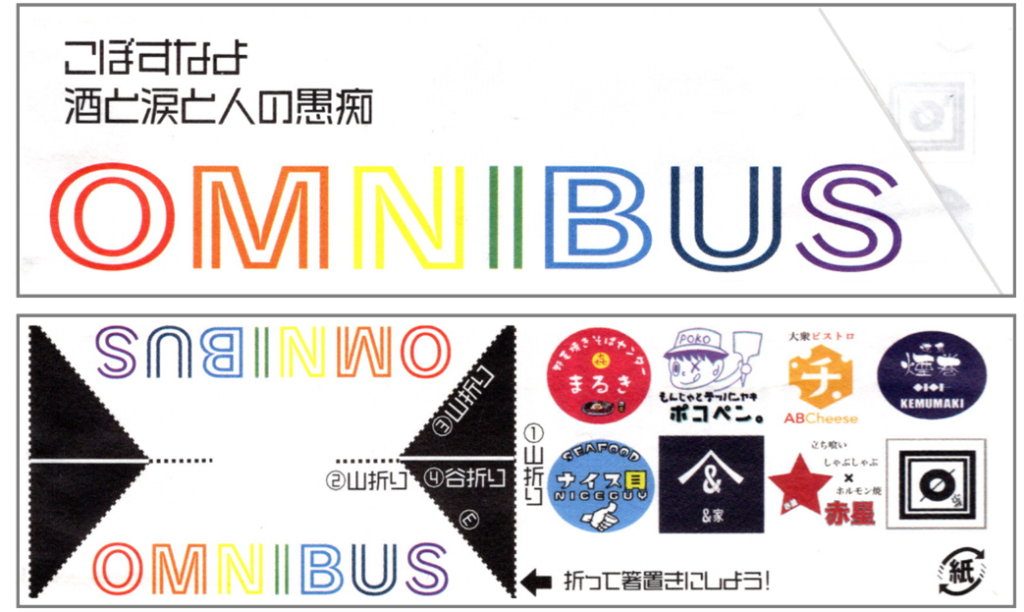The other night about ten translators in various stages of their careers—all of whom, however, are long-term residents here in Japan—got together for eating, drinking, and jaw-wagging at a yakitoriya. As often happens, at what would have been the end of our evening, there was a call to go to yet a second place, and five of us traipsed off to one, a place that could be characterized as an izakaya food court, consisting of eight different drinkeries housed in one large space, with very little demarcation between them. The average age of the clientele at all of them appeared to be no more than one-half—and probably closer to one-third—of our group. We stayed for perhaps less than an hour, and one thing that struck me, but only after I got home, was the chopstick envelopes.
It was of common design used by—and bearing the logos of—all eight places, but that was not the thing that stood out. Rather, it was the need that someone evidently felt to print on the envelope how to fold it into a chopstick rest. Were these instructions necessary?
I have been folding chopstick envelopes into rests for more than a half-century, and started doing that after I saw someone at a neighboring table do around 1967. I thought it was a minor skill and idea that sort of came with the territory when you are in Japan.

One side (at the bottom in the above image) of the envelopes we had, which are probably better described as sheaths, had instructions, adopting the terms yamaori and taniori that are used in origami paper folding, with circled numbers, no less, to indicate the sequence of making the folds. A bit of overkill, I think, but perhaps young’uns here are less in tune with folding things into useful, repurposed shapes.
To be fair, I vaguely recall seeing chopstick envelopes with such instructions in the past, but perhaps you need to go to rather low-end places to see them, as the higher-market places sometimes give you chopstick rests.
To give you some background on why I even took the envelope home, it was not to write this post, but rather because I collect chopstick envelopes. I also collect slide rules (no laughter, please), but I digress.
Bonus trivia: The text above the name Omnibus says “No spilling of sake or tears, and no kvetching about people.” The idiom for complaining about something also uses the verb to spill in Japanese, but that doesn’t work well in English.
